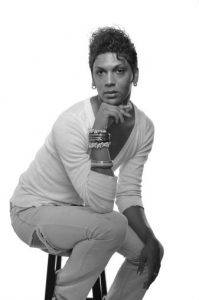Antoinette Astuto, President of G.E.a.R.S.
Sex and sexuality are concepts socially constructed and malleable through history. The ideas of what sexes are acceptable and unacceptable (male and female = acceptable, intersex = deviant) are continuously molded by the world we live in. In America, biological sex is identified at the moment of birth by a person of authority; a nurse or doctor. This choice of “male” or “female” is solely directed by the differing genitalia. We have socially created a binary in that there are only two acceptable sexes. But what happens when a person is born with an indistinguishable sex? They have genitalia that likens to both sexes, or maybe they look like a female, have a vagina, but have XXY chromosomes? Are they a male or female?

When a child is born with a noticeable ambiguity about the genitalia, we hand over control to the authority of the doctor. He or she then decides the sex of the child, thus placing them into a society that should raise the child into the “correct” and “fitting” gender role. We have allowed “authorities,” from medical to political, to physically alter our next generation due to socially constructed ideas of a sex binary. We learn how to perform our roles in society through media, cultural values, our family and many other social factors. The popular magazine Cosmopolitan teaches women how to please men in bed, while music videos teach men how to use and abuse women by objectifying their bodies. With increasing research, scholars are finding that our environment has a strong influence on what we believe is pleasurable, acceptable, illicit and abnormal in bed (or whichever surface you prefer).
Historically, the ideas on sex and sexuality have continued to change and actions considered deviant, even classified as a psychological disorder, are now accepted in American society. There were no such identification labels of male homosexuals in the Medieval times, but there are records of males who enjoyed sex with males. The behavior existed, but the label of the 21st century did not exist at the time. Today, we continuously construct our ideas of who a person is based on their sexual preferences.

According to sociologist Steven Siedmen’s “The Social Construction of Sexuality,” Americans often use their sexuality to identify themselves and others. We label homosexual, heterosexual, transsexual, asexual, etc. based on a person’s behavior (even if the label is inaccurate or grossly misused) but other cultures only see sexuality as a practice.
Identification with sexuality can be empowering and positive for someone who deviates from the norm because they find acceptance within a category. Yet, identifying a sexuality can also outcast a person because the behavior is seen as unacceptable or shameful to society. A woman who enjoys sexual relations is often labeled by her sexuality. She is called a “whore,” “slut,” or if she is not known to engage in sexual relations, a “prude.”
What we do sexually does not define us. Society has allowed our genitalia to be the deciding factor on who we are, what we achieve, how people treat us and how we treat others. Let’s break that cycle.
The Gender Equality and Rights Society meets Tuesdays at 6 p.m. in the Susquehanna Room of Hunt Union. It is an organization dedicated to discussing gender issues in the political, social and environmental realms that affect the lives of women and men on the SUNY Oneonta campus, and in the greater society.
Leave a Reply